Help! Loud noises are making my dog, and me, crazy!
There are certain dates in the year which dog parents dread. You know what we’re talking about, when we mention ‘fireworks’. (Why, oh why, don’t they ban the horrible things?) We hate the sound of the word because we know the suffering this causes for many of our dogs and, consequently, for us. Dreadful stories abound, including dogs jumping into swimming pools and drowning, to dogs destroying furniture, running away and getting lost and attempting to climb walls and fences and getting seriously injured in the process. Your dog may shake, drool excessively, tremble, bark, whine or wee or poop in the house. The same behaviour may result from thunderstorms. Sometimes, an otherwise placid dog may even become aggressive..

One doggie mom reports that she shut her German Shepherd in the bathroom in an attempt to calm him down in a small space and to prevent him destroying her furniture, during a thunderstorm. She was horrified to discover later that he had bitten the built-in porcelain soap dish off the wall and chewed it to pieces. His gums, as you may imagine, were bleeding.
How do we account for this, apparently, mad behaviour? It is called noise phobia and it is relatively common. It can develop in dogs of all types, sizes and ages. A brief, short-term fear can generalize into other situations and can become serious noise phobia.
What are the causes of noise phobia?
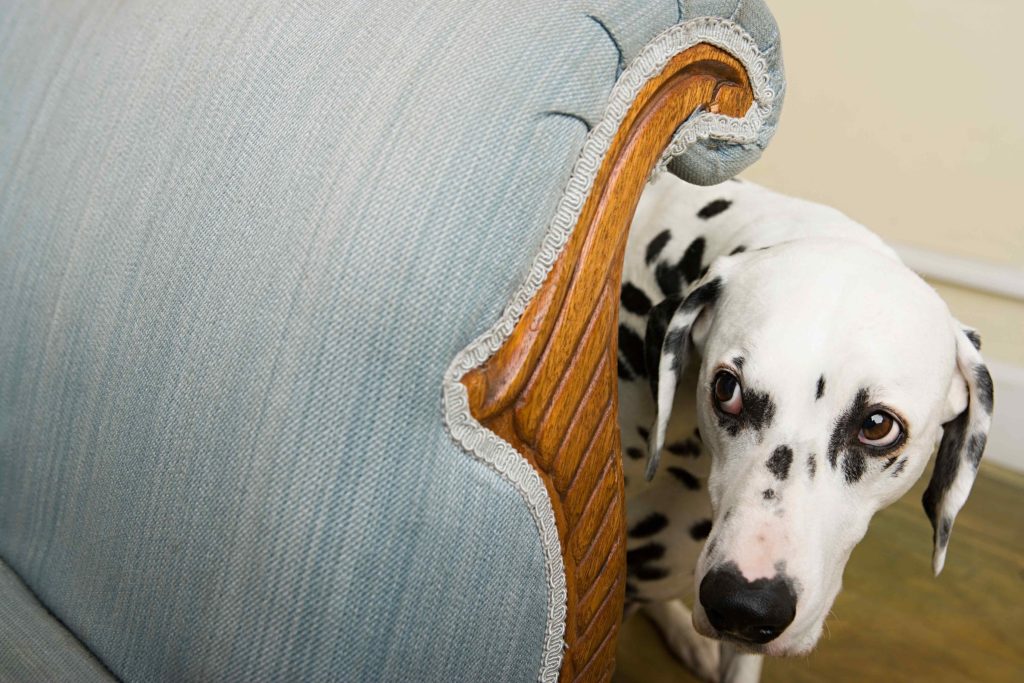
It seems that puppies who are not exposed to a variety of noises when they are less than four months of age, are at a higher risk. Dogs can also pick up noise phobia from their brothers and sisters. If a dog is terrified of thunder, he/she is likely to be terrified of fireworks, or any loud noise. Noise phobias can also develop after a traumatic situation, like being in a car accident or being home alone during a storm. Also, certain medical conditions which cause your dog pain can increase his susceptibility to noise phobia.
When our dogs hear certain sounds, their brains process them to check whether or not they might indicate danger. Many loud sounds may be found to be ‘safe’ when your pet has experienced them before, like a door slamming for example. They also tend to dismiss sounds which come from a predictable source, like noises from the T.V., for example. They have learnt that these noises do not pose any threat to them.
Most fears are learned and can, therefore be unlearned with conditioning, but phobias are more persistent over time and tend to be irrational.
Why are some dogs scared and some are not?
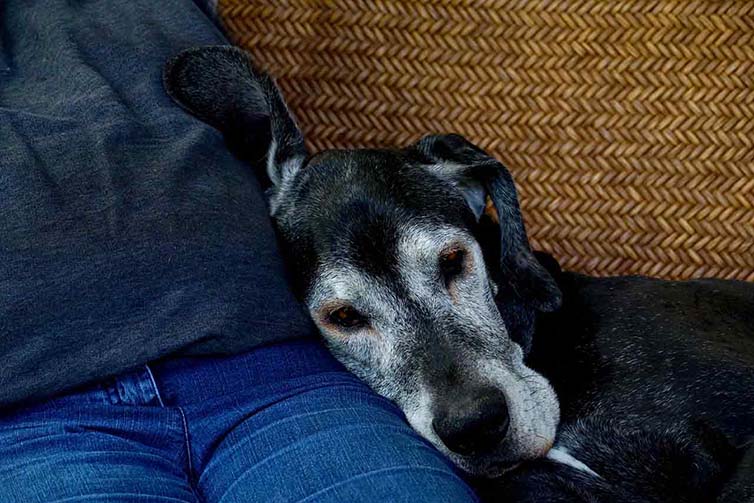
It’s a fact that some dogs suffer from noise phobia and others do not. And it’s got nothing to do with size either: Dogzilla may be quivering like a leaf at the very distant sound of thunder, whereas wee Pedro the Chihuahua happily peers out of the window wanting to join in when fireworks are set off on November 5th. Let’s look at some possible reasons for these differences.
1. Biology
Sound determines dogs’ experience of the world around them. They hear twice as many sound frequencies as humans and can detect sounds more than four times further away. Doggie brains have to determine which sounds to react to and which to ignore. This is particularly important for dogs working with the police, so that they do not overreact when they hear, for example, a distant gun-shot. Some dogs, it seems, overreact to all sounds and appear to be unable to distinguish between harmful and unharmful sounds.
2. Conditioning
Puppies, like human babies, go through critical stages of development, when their brains undergo changes which dictate their behaviour for the rest of their lives. For example, if a puppy hears a certain noise while home alone, he/she may grow up to associate that noise with loneliness and consequently, will react with fear when hearing that noise as a fully-grown dog. After about 12 weeks of age, they start to learn what they must be afraid of and what is harmless.
3. Genetics
Differences in temperament also play a big part in fear responses. Temperament is shaped by genetics and early conditioning. and can play a key role in the animal’s reactions to stressful situations. Research studies, in humans and animals, have shown that when the mother – human or canine – is exposed to high levels of stress while pregnant, it causes high levels of the stress hormone, cortisol, to flow through the bloodstream, activating the ‘fight or flight’ response. Too much cortisol, released too often, can cause stress reactions in the unborn baby or puppy.
In various studies of responses to noises, researchers have found that many factors play a role in differences in fear responses, including breed, sex, age, whether spayed/neutered or not and early exposure to loud noises, all impact on whether or not a dog shows exaggerated fear towards thunder storms. For example, some breeds tend to be more fearful than others and fear tends to increase with age; One thing that researchers have discovered is that if possible, doggie breeders and parents should try not to let the fear develop in the first place. A Swiss study analysed the treatment methods used by 1,225 dog owners in relation to fear reactions. The scientists discovered that at-home ‘counter-conditioning’ could successfully reduce the dogs’ stress, such as playing quietly with the dogs during a thunderstorm (smithsonianmag.com “Why fireworks scare some dogs …”).
What can I do to help my dog?
As with many psychological and physiological conditions, it helps if you try to stop this problem from getting worse while your pooch is still young. Let’s have a look at some suggestions:
Consult your vet!
This is important for two main reasons: First, your vet will probably examine your pet in order to rule out any physiological problems, and secondly, she will be able to make some suggestions regarding treatment. These may include any of the strategies outlined below.
Background Noise
Playing soothing music may help. Heavy rock will probably not. You may find calming music for dogs on YouTube which may help to distract your pet from loud noises coming from outside the house and to calm him down. However, this is unlikely to be effective against prolonged fireworks or a heavy thunderstorm.
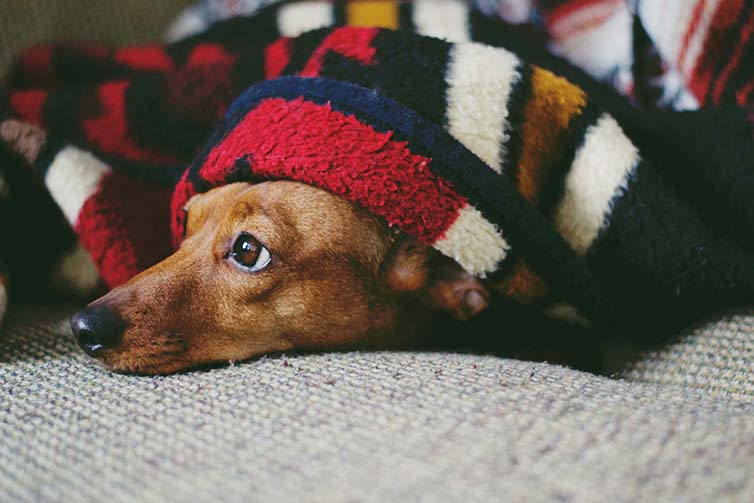
A Safe Place
A silent (relatively), small, dark place may help to keep your pet calm. Remember that in the wild, dogs feel more secure in their small den. You could try putting him in a wardrobe with blankets, or you could construct a temporary shelter by putting blankets over his crate or kennel, or even over a small table. Obviously, you will have to introduce these places to him/her gradually when it is quiet outside. Provide your pet with treats to entice her to make use of this small space and make it cosy and comfortable with cushions and familiar toys and chews. Your dog may find a place for herself which you can make more attractive with soft blankets and treats until she gets the idea that this is a desirable and safe place to be.
Calming Pressure
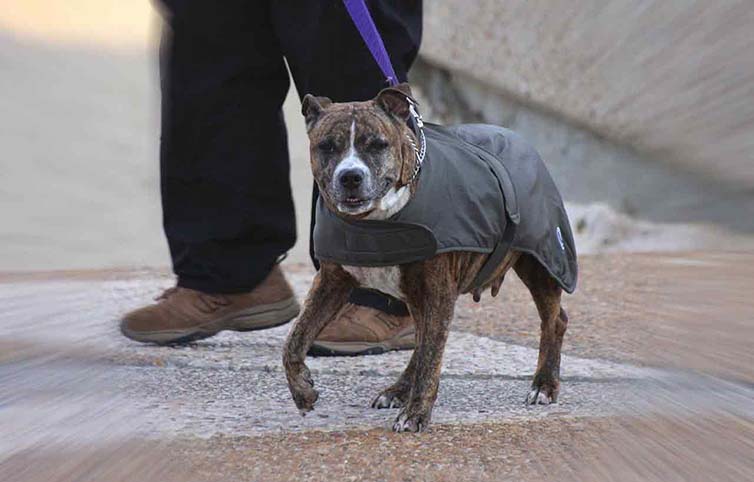
Applying pressure on your pet’s muscles may help to calm him. Just use the flat of your hands, applying gentle, continuous pressure, until, hopefully, you feel him/her relax. Remember that every dog is different so if he/she doesn’t relax then you’ll have to find another solution. Another way of applying pressure is to use a special wrap ‘jacket’, or ‘Thunder Shirt’. These are available in some pet shops and online. You can also make your own, by using wide bandages or by tying a small duvet or blankets around him. The pressure makes him/her feel more secure and safe in a similar way that swaddling helps to make new-born babies feel more secure. You can even use an old T-shirt for a larger dog.
Essential Oils
There are certain essential oils that have been used by humans, which have been found to be effective for anxiety in dogs. violet leaf, sandalwood and frankincense, put in a vaporiser or in a bowl of water or handkerchief, may alleviate your pet’s anxiety.
Desensitisation
This is a process used by behavioural psychologists on humans to help them overcome phobias. It can also work with dogs. Basically, it involves gradually exposing the person/animal to small amounts of the noise/sound which they are afraid of, gradually building up to exposure to the actual stressor, in a controlled environment. So, it would involve starting with a low level of the noise your pet is afraid of, keeping him/her calm all the time, and increasing, over several days, the level of noise, until it approximates the real sound. An animal behaviourist would be able to help with this. There are also videos on YouTube and CDs which play certain sounds, gradually increasing the volume until your dog is able to tolerate the loud noises comfortably. Training sessions should be no longer than around 10 minutes. This should be done in a “safe’ and pleasant environment, possibly accompanied by some treats. This process may take some weeks, so don’t wait until a week away from annual festivities.
NEVER use punishment even when your pet has used destructive behaviour when he/she has been traumatised by loud noises while you have been away. This will increase your pet’s anxiety and fear.
Medication
Your vet may first examine your dog to check whether or not there may be a medical condition which might explain this behaviour. There are certain conditions that could aggravate your dog’s anxiety which need to be ruled out first. Your vet may suggest taking your panicking pooch to an animal behaviourist. Alternatively, or additionally, she may prescribe tranquilisers specially made for animals. There are also certain anti-depressant drugs which have been found to help with this phobia. Pheromone products may also help with noise anxiety. They are synthetic versions of dog-appeasing pheromones and have been found to help dogs with anxiety, often accompanied by desensitisation.
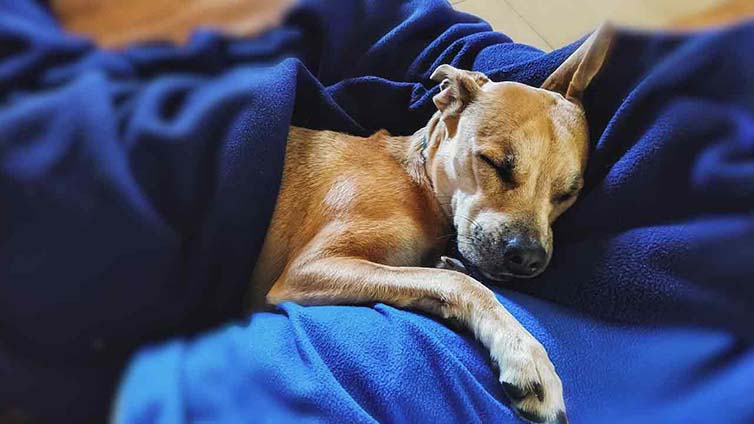
And finally …
Keep Calm!
Remember that you are the leader of your pet’s pack and they will take their cue from you. Animals are very quick to pick up signs of your stress and anxiety, so it is very important to remain as calm and quiet as possible. (Do not be tempted to take any of your dog’s tranquilisers!)

Subscribe to our Newsletter
Get to know your furry friend better! Sign up for all things dog- or cat-related.
The Hairy Facts about the dreaded hairball
12 April 2021
Help! My dog’s barking mad! Volume 2
12 April 2021
Your Itchy, Scratchy Cat – All About Cat Skin Problems
12 April 2021
The Dog’s Diet: A Bone of contention?
01 April 2021
Mango Fly Worms: How to Spot and Eliminate them
Posted on November 28,2019
Managing Mange And Mites In Your Dog
Posted on June 11,2018
Why Do Cats Purr and How? Learn What Your Cat Is Saying
Posted on October 14,2020
How to Get Rid of Ear Mites in Dogs
Posted on November 06,2019









